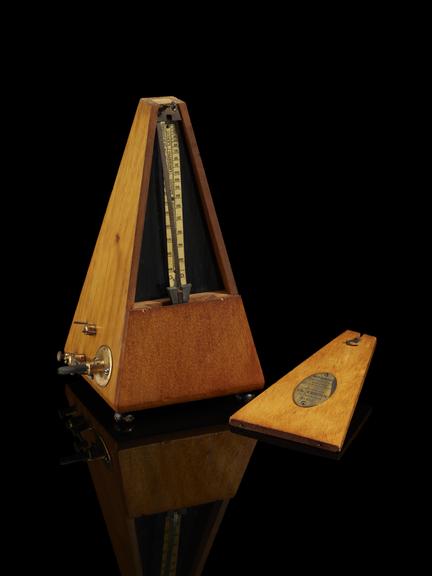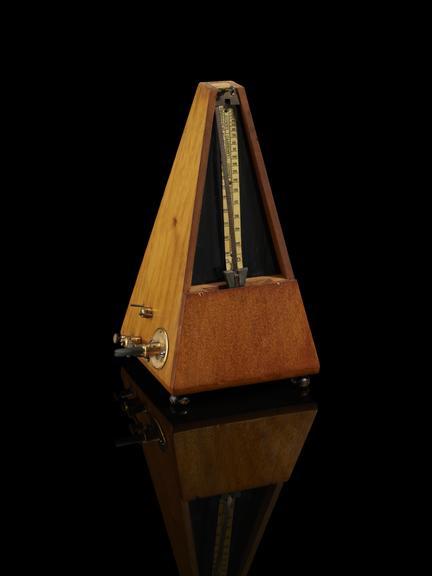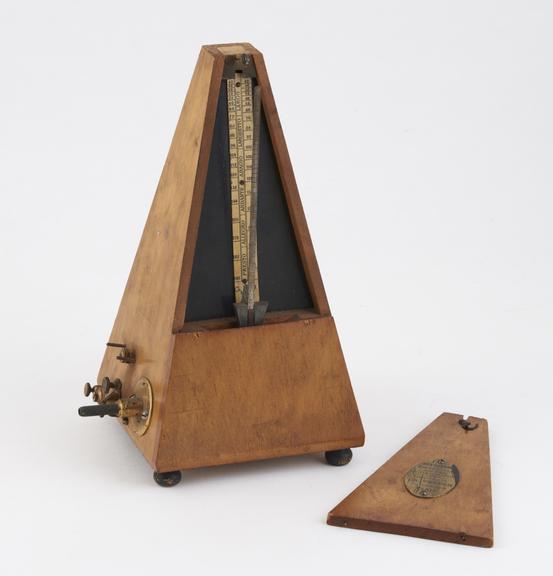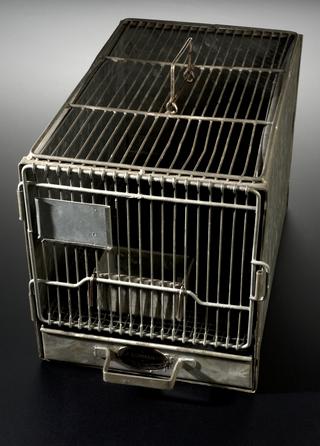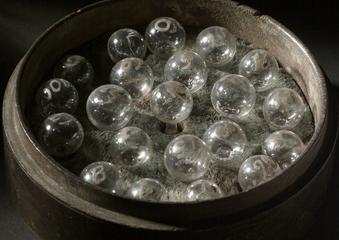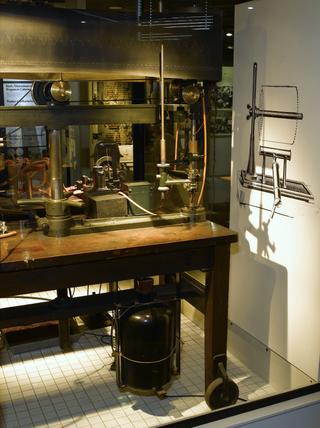
Metronome
- maker:
- Charles Verdin







Metronome, Charles Verdin, Paris, c1890 – 1907.
Metronomes are scientific instruments that produce an audible click at regular intervals to indicate tempo. Invented by German Johann Maelzel in 1815 as a tool for musicians, metronomes were also used by medical practitioners to measure different aspects of the body and the human mind, for example, to study the perception of beats. Mostly used by musicians to practice their timing while playing, singing, or conducting by following the tempo, mechanical metronomes like this one work with a winding clockwork motor which makes the central rod swing left to right while an internal mechanism produces a sound (usually a ‘click’). Metronomes have an adjustable weight on the main rod that allows the user to control the device’s tempo (up to decrease or down to increase).
This device was made by French instrument maker Charles Verdin who specialised in all sorts of scientific mechanical instruments at the end of the nineteenth century.
Details
- Category:
- Laboratory Medicine
- Object Number:
- 1985-1729
- Materials:
- wood (unidentified) and metal (unknown)
- Measurements:
-
overall: 227 mm x 150 mm x 112 mm, .4 kg
- type:
- metronome
- credit:
- Brieux, Alain
